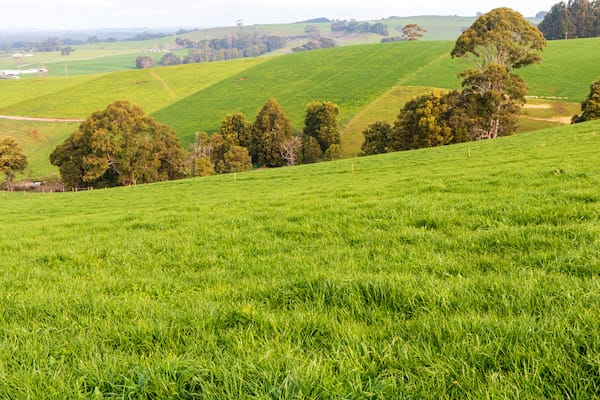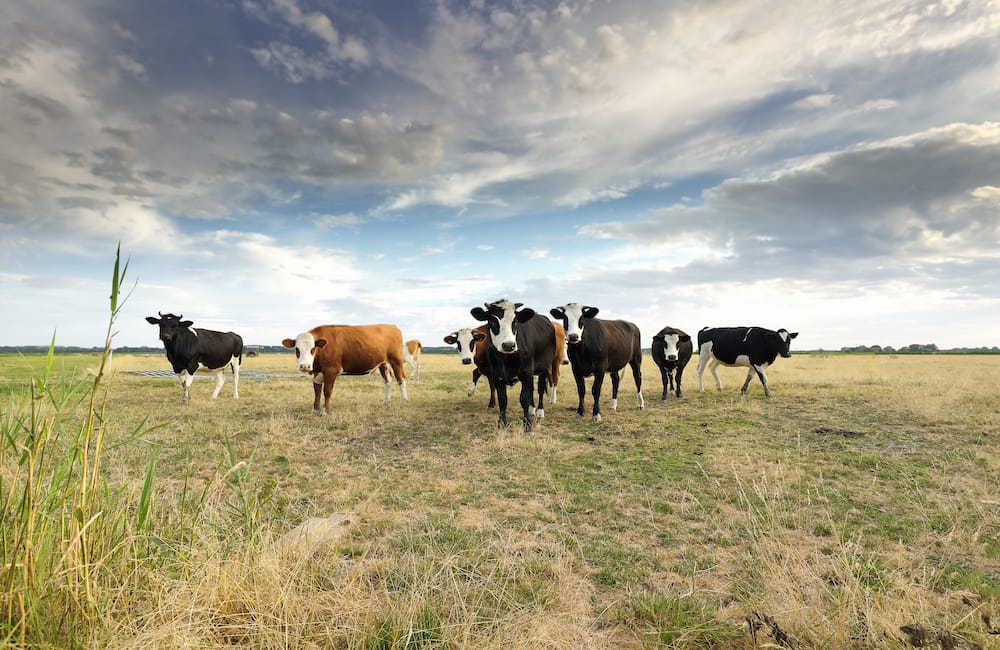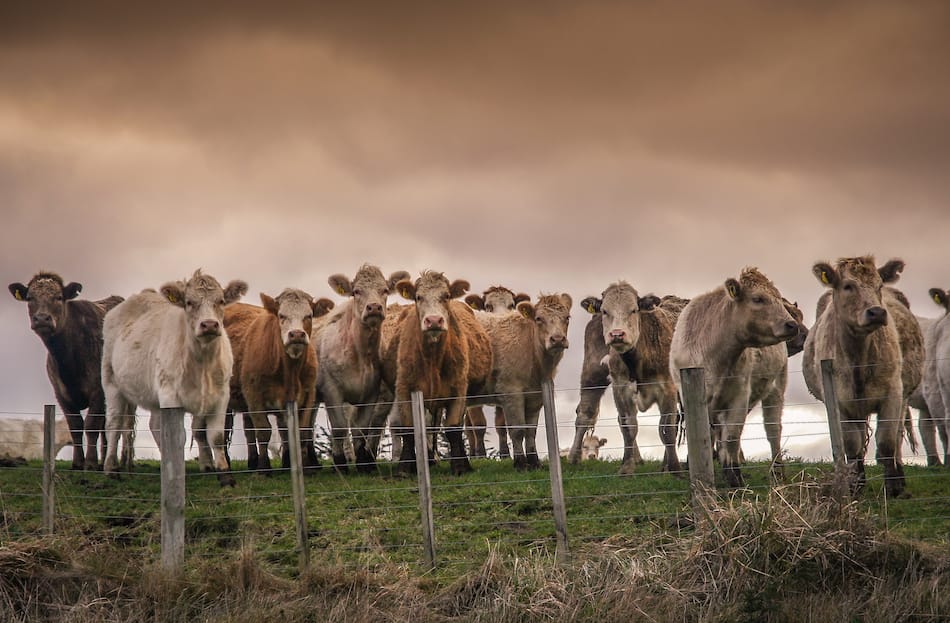Article Summary:
Practical implementation of deferred grazing requires an in-depth and clear understanding of grazing outcomes, pasture composition, growth targets, and seasonal bottlenecks. The next step is knowing which type of deferring will answer your unique pasture goals. Learn with us our ways and explore the growth stages plants on deferred paddocks are going through.
Deferred grazing is a management tool that contributes to enhanced pasture performance in several ways.
Deferring a paddock throughout summer allows native grasses to seed. It allows the accumulation of a rich seed bank in the following autumn, thus rejuvenating the pasture.
Deferring 10-15% of paddocks casts it out from rotational grazing and increases pasture utilization and pasture optimization for the rest of the paddocks.
Deferred grazing is a formidable farm management tool. Deferring ~15 % of paddocks increases profitability by raising gross margins to 8% per hectare, without any additional costs. There are several types of deferred grazing, and farmers ought to choose which method suits them and accomplishes the productivity target.
Today, we delve into the types of deferred grazing and see how each type can become a tool for farm management to increase pasture productivity. We will discuss the critical step of getting the timing of the deferred period right. Paddocks are rested from grazing starting from mid-spring to early autumn.
Keeping track of the plant’s growth stage is critical in getting the deferred time right. We will discuss what happens in your flourishing pasture when it’s deferred. Let’s talk grazing!

Implementation of Deferred grazing for practical outcomes
Before we indulge in learning about the types of deferred grazing, it is crucial to mention how your farm management can benefit from it.
Practical implementation of deferred grazing requires farm management to have a clear understanding of pasture composition, growth targets, seasonal bottlenecks, and expected outcomes from deferred grazing.
Below are some such points.
- Monitor the presence of existing species in the farm, from early spring to mid-spring. Draft the proportion of desired species on the farm.
- Ascertain the objective of adopting deferred grazing. Some common targets are increasing the ground cover, changing the composition of grass species, rejuvenating the pasture, boosting the seed bank, etc.
- Preparing the pasture for intensive grazing and increasing the number of livestock production.
- Keeping some paddocks as a backup. These paddocks can be brought back into rotation when needed.
- Making the most out of rainfalls and the length of the growing season.
- Deferring can serve the environmental aspiration and restore the soil.
- As a deterrent against perceived fire risk.

Types of Deferred Grazing
Once drafting the desired outcome of deferred grazing, farm management can decide which type of deferring would best suit their unique pasture in meeting the growth targets.
1. Optimized Deferred Grazing
This grazing type is best suited for changing the pasture composition. For instance, it would lift the population of perennial grasses while suppressing the population of annual grasses.
This strategy ought to have opted when the following conditions are met.
- The desirable perennial species is greater than 20 per cent in the pasture.
- Stock requirement and intensive grazing targets are met.
- Seasonal conditions and climate are favouring a surplus.
To achieve the best results from optimized deferred grazing, the timing is critical. It requires heavy grazing in winter and early spring when annual grasses are booming and their seed heads have not emerged.
2. Short-term deferred grazing
When farm management’s target is to increase the seed reserves in the soil leading to increased ground cover, short-term deferred grazing is employed. It will increase plant population density without changing the composition of pasture. This strategy is best when:
- Intensive grazing is not possible.
- There is a shortage of feed in summer.
- There is a threat of wildfires.
Short-term deferred grazing increases the plant density and ground cover. It provides the time window for the farm management to craft a long-term plan.
3. Long-term deferred grazing
There is no defoliation from mid-spring to late autumn in this type of deferred grazing. Long-term deferred grazing is a preferred strategy to achieve the listed results;
- Building the soil seed reserve
- Retaining soil moisture
- Increasing the population of perennial grasses
- Restoring ground cover
With this strategy, a quick recovery of paddocks with a low percentage of perennials, 5-10%, is possible.
4. Timed Grazing
This type of deferred grazing is chosen to achieve the following goals;
- Building soil sees reserve
- Increasing the ground cover
- Add new plants
Timed grazing is a substitute for long-term deferred grazing. It requires heavy grazing over a short period, 10-20 days. After that, the paddock is rested for 120-130 days.
This strategy allows the rejuvenation of perennial paddocks having a low percentage of desired species ( 5% or less).
5. Strategic deferred grazing
Grazing management is about optimizing pasture productivity and rejuvenating degrading pastures. To that effect, strategic management of pasture when combined with types of deferred grazing, gives the best outcome. It is termed; Strategic deferred grazing.
For instance, the application of fertilizer following optimized deferred grazing can significantly increase the yield and nutritive value of the desired species. Also, strategic deferred grazing is used against weed infestation.

What’s going on inside a deferred paddock?
The best time for deferring a paddock depends on the plant growth stage. Time from mid-spring to late summer or early autumn is most suitable. This allows the ryegrass and perennial grasses to reseed and produce new tillers.
| Time Period | Growth Process of plants |
|---|---|
| Spring and Early Summer |
|
| Mid to late summer |
|
| Early Autumn |
|
Just like other farm management tools, deferred grazing is not without flaws. Deferred grazing reduces the length of the grazing season and works in restoring native pastures.
However, farm grazing management can strategically align growth targets with various grazing tools to optimize farm productivity. For various pastures, these shortcomings are a blessing in disguise. This brings us to the end of the article.
Until we meet again, Happy Deferred Grazing!
- The Dedicated Team of Pasture.io, 2022-01-19